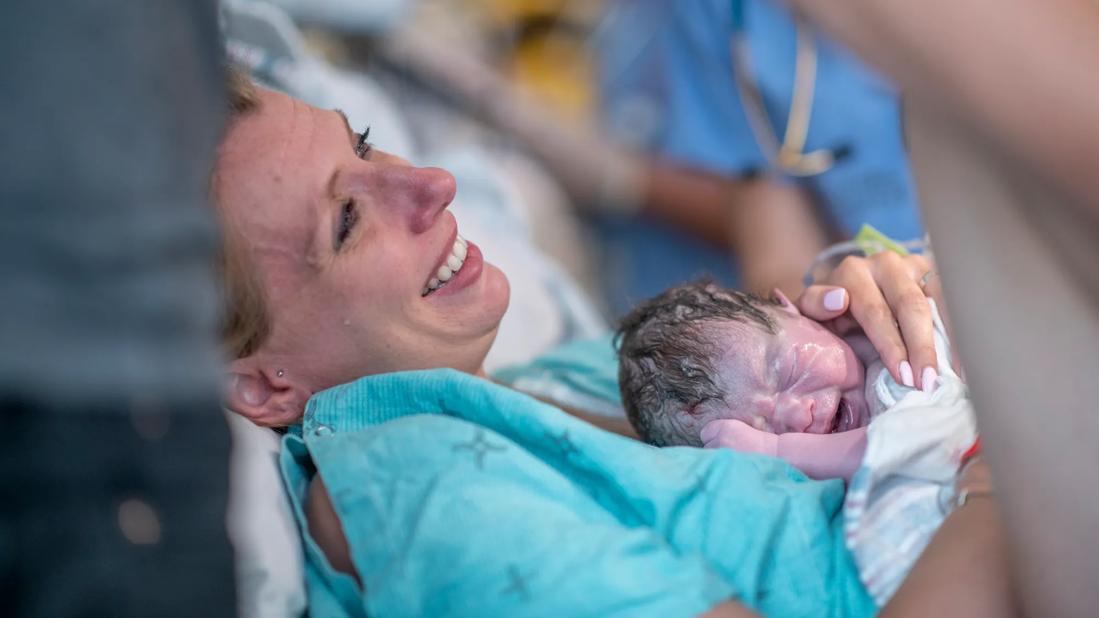Initial outcomes suggest increased incidence of cesarean delivery

By Jeff Chapa, MD
Advertisement
Cleveland Clinic is a non-profit academic medical center. Advertising on our site helps support our mission. We do not endorse non-Cleveland Clinic products or services. Policy
Since the ARRIVE trial was published in The New England Journal of Medicine in August 2018, obstetricians and midwives have carefully considered the potential benefits and risks of elective labor induction in nulliparous, low-risk women at 39 weeks of gestation. In response to the practice advisory released from the American College of Obstetricians and endorsed by the Society for Maternal-Fetal Medicine, we have begun to offer elective labor induction; however, our experiences have not been entirely consistent with those reported in the original study.
The ARRIVE trial sought to compare perinatal death or severe neonatal complications in women whose labor was electively induced at 39 weeks 0-4 days gestation with those of women who underwent expectant management until delivery or induction no later than 42 weeks 2 days gestation.
Although elective labor induction in the 39th week did not improve the primary outcomes, results indicate reductions in the risk of developing hypertensive disorders of pregnancy (9.1% in the induction group versus 14.1% in the expectant management group; p < 0.001) and the incidence of cesarean delivery (18% versus 22.2%; p < 0.001). Induced women spent longer periods of time in labor and delivery compared with the expectant management group (20 hours versus 14 hours; p < 0.001), but length of stay after delivery was shorter than that of the expectant-management group (stay of three or more days was seen in 17.8% versus 21%, p = 0.01). Study authors note that the generalizability of these results is unclear and that the cost-effectiveness of inducing labor at 39 weeks in low-risk nulliparous women requires further research.
Advertisement
Before offering scheduled inductions to women at 39 weeks, the American College of Obstetricians and Gynecologists (ACOG) recommends considering the following:
At Cleveland Clinic, we have consolidated obstetrical services to three larger facilities, while closing several low volume units over the past few years. This has led to our labor and delivery units operating at a very high capacity. As such, we have had to limit the number of patients who can undergo elective induction of labor due to concerns with longer labors and overwhelming the resources available at any given time. At one of our hospitals, this translates to one induction slot per day, with the premise that high patient volume and presence of other higher acuity cases on the unit could lead to cancellation or rescheduling of the elective induction of labor.
We encourage shared decision-making between clinician and patient, taking into account potential risks, benefits and preferences. Rather than automatically including patients and asking them to possibility as opposed to ‘opt out,’ select patients ‘opt-in.’ Interestingly, the demand for elective induction at 39 weeks gestational age in uncomplicated pregnancies does not seem to be that high, as many patients prefer to go into labor spontaneously. While the purely elective inductions are not that numerous, we have seen more patients being induced for reasons that might not have warranted induction in the past.
Advertisement
In our extremely limited experience to date, we have not seen a significant reduction in cesarean deliveries in this group of patients. Induced labors have generally been longer, requiring more significantly more time in our labor and delivery units. We are in the process of collecting data on these elective inductions to see how our results compare to those reported in the ARRIVE trial. It is possible that outcomes are our own institution may differ from those reported in the ARRIVE trial for reasons related to the overall generalizability of the study and its intent-to-treat methodology. For instance, outcomes of women randomized to the induction group were not excluded if the patient went into spontaneous labor or were induced for medical reasons on or before 39 weeks 4 days (N = 184, 6%). Thus, our elective induction cohort would differ somewhat from that analyzed in the ARRIVE trial.
Advertisement
Advertisement

ACOG-informed guidance considers mothers and babies

Prolapse surgery need not automatically mean hysterectomy

Artesunate ointment shows promise as a non-surgical alternative

New guidelines update recommendations

Two blood tests improve risk in assessment after ovarian ultrasound

Recent research underscores association between BV and sexual activity

Psychological care can be a crucial component of medical treatment

A multidisciplinary approach facilitates timely diagnosis and better treatment